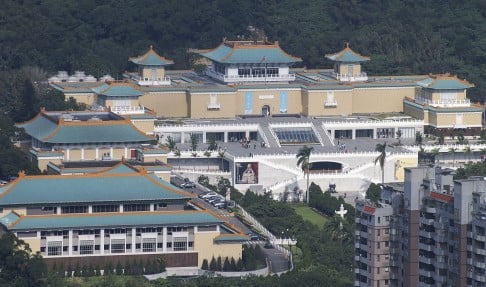Amazing journey: how China hid palace artefacts from Japanese invaders
As the palace museums in Taiwan and Beijing celebrate the latter’s 90th anniversary, Mark O’Neill explores the remarkable ends to which museum staff and officials went to avoid artefacts being seized by Japanese troops.

This weekend, the Palace Museum in Beijing is celebrating its 90th birthday. By the end of the year, together with the National Palace Museum, in Taipei, it will have received more than 20 million visitors. But few of them will be aware of the extraordinary story behind some of the treasures they have seen and the odyssey that has taken those artefacts on a journey of thousands of kilometres.
In 1933, after the Japanese army had conquered Manchuria and was threatening northern China, the directors of the original museum, in Beijing’s Forbidden City, moved 19,600 crates of treasures to keep them out of the clutches of the foreign aggressors. After all-out war began, in 1937, the directors hid the pieces in southwest China. In 1948 and 49, then president Chiang Kai-shek shipped 2,972 crates to Taiwan, where he built the National Palace Museum in 1965.
The Forbidden City Palace Museum now boasts 1.8 million pieces, including 53,482 paintings, 75,031 works of calligraphy and 159,734 items of copper, as well as 603,000 ancient books and documents, 367,000 pieces of porcelain and 11,000 sculptures, some of which date back to the Warring States Period (475-221BC). The museum in Taiwan possesses 696,000 pieces, including works of art, rare books and historical documents. Museums around the world compete to show exhibitions from the two collections. Last year, the Palace Museum attracted 15 million visitors, making it the most popular museum in the world; the National Palace Museum attracted 5.4 million.

THEIR STORY BEGAN ON November 5, 1924, when Puyi was expelled from the palace in which emperors had lived for 500 years. He had been allowed to remain in residence after the 1911 revolution but the new Republican government removed the deposed emperor when it was discovered that he, the eunuchs and other court officials were responsible for the widespread theft of the palace’s imperial treasures.
Inspired by the Louvre, in Paris, and other royal palaces in Europe, the government wanted to turn the imperial residence into a museum. The collection consisted of 1.17 million pieces, according to the first ever inventory, and the Palace Museum opened on October 10, 1925, the 14th anniversary of the Republic of China.